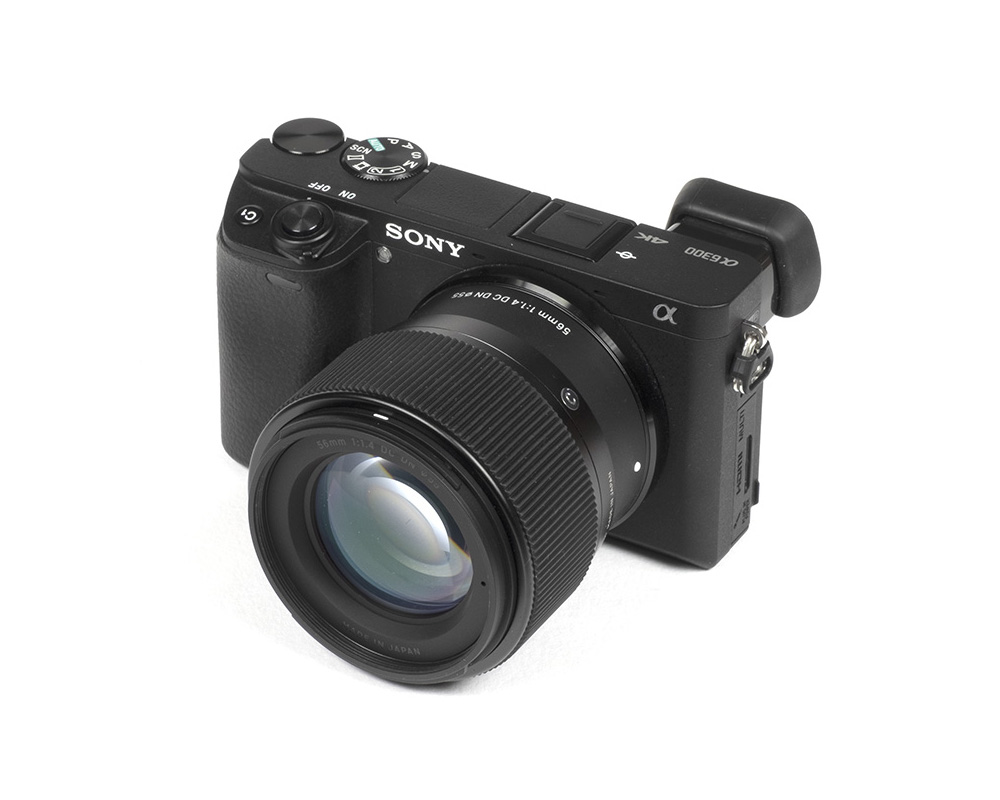Introduction
Sigma seems to have hit a sweet spot with its “DC DN” trinity of fast APS-C/MFT format prime lenses (16mm f/1.4, 30mm f/1.4, 56mm f/1.4). This can’t come as a real surprise because neither Sony E, L-mount nor Canon EOS M are especially blessed with many APS-C format prime lenses. Although to be fair here – Sony/L-mount users can also take advantage of an extensive line of full format lenses albeit these tend to reside in a different price bracket.
We reviewed the Sigma 16mm f/1.4 DC DN Contemporary just a few weeks ago so let’s move on to its cousin now, the Sigma 56mm f/1.4 DC DN Contemporary. The lens is attractively priced at around 450USD/400EUR as is as such aligned to the more moderate camera pricing in the APS-C/MFT class. In full-format terms, it is equivalent to a fast “85mm” medium tele lens (on Micro-Four-Thirds: 112mm) which is suitable for a variety of use-cases such as portraits, street photography, or other shallow depth-of-field applications.
While you may guess that the 16mm f/1.4 and 56mm f/1.4 are fairly similar in terms of package size, the 56mm f/1.4 DC DN is actually much shorter (59.5mm vs 92.3mm) as well as more light-weight (280g vs 405g). It may carry the “Contemporary” designation but there’s not much “consumer-ish” about it. The lens body is tightly assembled and made of metal and Sigma’s high-quality TSC material. The broad, rubberized focus ring turns smoothly. A hint that Sigma had to cut corners is the sealing of the lens which is limited to the mount. The lens does not extend during focusing so that’s certainly positive when it comes to surviving in harsher environments. A plastic, barrel-shaped hood is part of the package.

The AF is quite fast and essentially noiseless. Typical for most E-mount lenses, manual focusing works by wire. Unfortunately, the manual focus action is very coarse and as such not very precise at short to medium focus distances – a characteristic shared with the 16mm f/1.4 DC DN. An image stabilizer is not provided.
| Specifications | |
|---|---|
| Equiv. focal length (full-format) | “85mm” (in terms of field-of-view) |
| Equiv. aperture (full-format) | “f/2.1” (in terms of depth-of-field) |
| Optical construction | 10 Elemente in 6 Gruppen inc. 1x aspherical, 1x SLD elements |
| Number of aperture blades | 9 (rounded) |
| min. focus distance | 0.5m (max. magnification 1:7.4) |
| Dimensions | 66.5×59.5mm |
| Weight | 380g |
| Filter size | 55mm |
| Hood | barrel-shaped (bayonet mount, supplied) |
| Other features | – |
| Mounts | Sony E (APS-C), Canon EF-M, Micro-Four-Thirds, L-mount |
Distortion
Unfortunately, the technical analysis has to start with a weakness of the lens – image distortion. The original characteristic is hardly impressive with a pincushion distortion in excess of ~2.8%. This is rather extreme for such a prime lens.
Of course, in real life, this may be a lesser issue if you keep image auto-correction activated. Surprisingly it just eases the issue but doesn’t eliminate it completely. However, at just 0.6% it’s not really something to worry about.
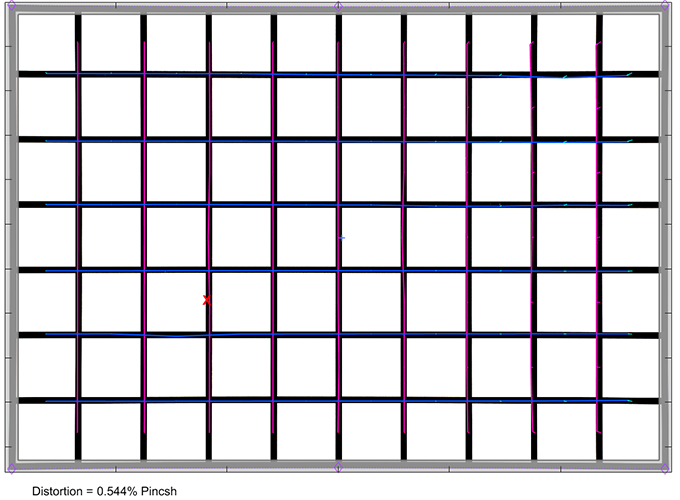
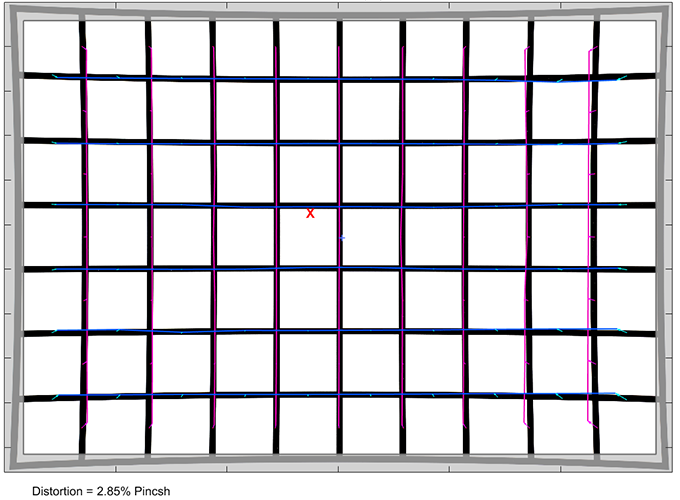
Vignetting
A similar pattern is present for vignetting. RAW images show a heavy light-falloff (for an APS-C lens) at f/1.4. A vignetting of ~1.7EV (f-stops) is easily visible. Stopping down to f/2 helps but the issue is only mostly dissolved from f/4 onward.
Once again, image auto-correction comes to the rescue. It reduces the vignetting by about 1EV at f/1.4. While you may still spot the resulting ~0.7EV drop in critical scenes, it’s usually not a dealbreaker. The light falloff is basically gone from f/2.8 in this case.
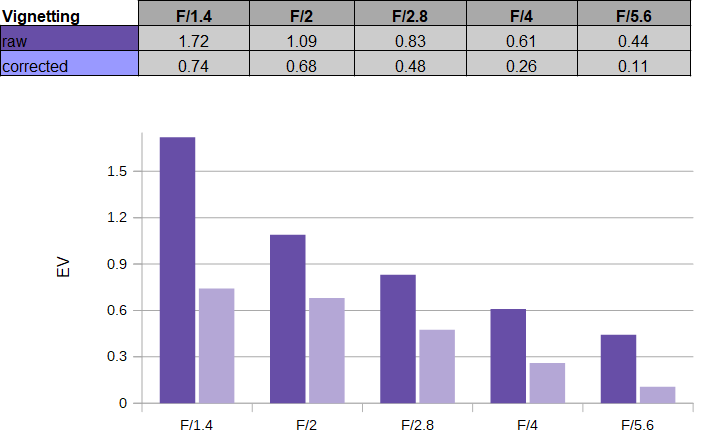
MTF (resolution)
The Sigma 56mm f/1.4 DC DN Contemporary has a superb resolution characteristic. It is already very sharp at f/1.4 in the image center and just a tad less so in the outer image field. The center quality is superb between f/2 and f/5.6 and the borders/corners are also highly impressive. Diffraction effects are only visible beyond f/8.
The centering quality of the tested sample was very good. The field curvature is low.
Please note that the MTF results are not directly comparable across the different systems!
Below is a simplified summary of the formal findings. The chart shows line widths per picture height (LW/PH) which can be taken as a measure for sharpness. If you want to know more about the MTF50 figures you may check out the corresponding Imatest Explanations

Chromatic Aberrations (CAs)
Lateral CAs (color shadows at contrast transitions) are very low peaking at an average CA pixel width of less that 0.4px at f/1.4. Beyond the CAs are virtually non-existent.

Bokeh
“Bokeh” is a Japanese word referring to the way, out of focus blur is rendered. There are two main aspects – out-of-focus (background) highlights and the rendering of contrasty objects in the focus transition zones. If you buy a lens such as the 56mm f/1.4 DC DN, you will usually target shallow depth-of-field applications thus the bokeh isn’t a secondary criterion here.
Let’s have a look at the “highlights” first – and they are almost perfect in the image center at least. The inner zone of the discs is very clean and there is no outlining to speak of. The discs are circular at f/1.4 and (mostly) f/2. The more edgy aperture shape starts to emerge at f/2.8.

When looking at the whole image frame, the situation is a little different though. As you can see below, a fully circular highlight shape is only maintained near the image center. The shape deteriorates towards “cat eyes” from the midfield into the corners. This is a mechanical vignetting effect from the lens barrel but it sets in a little “early” here. Stopping down broadens the “good” zone in the center but cuts the corner highlights. A circular shape in the corners is mostly restored at f/4 (not shown).
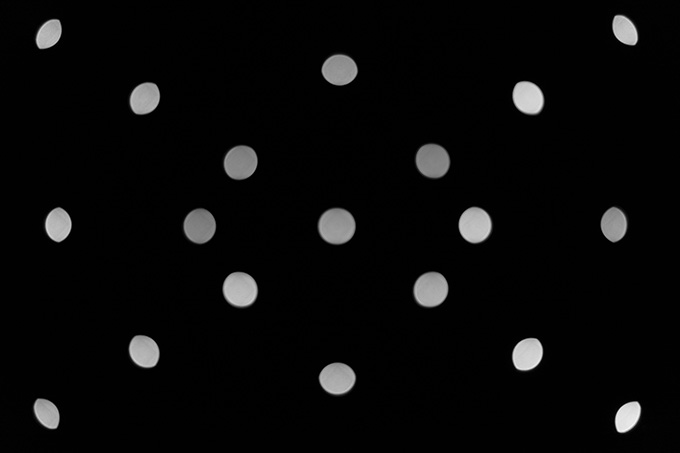
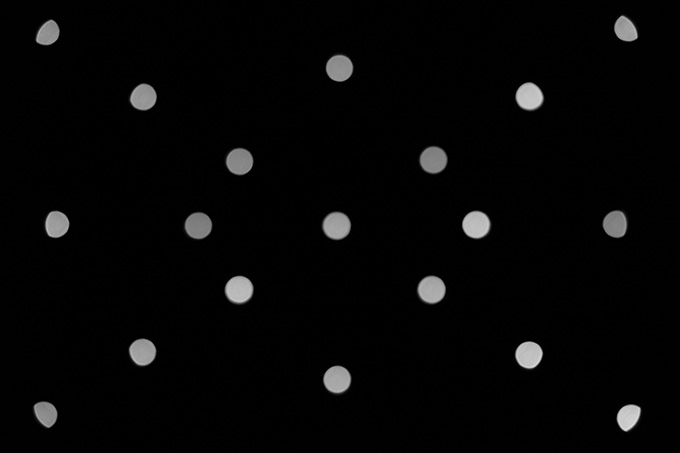
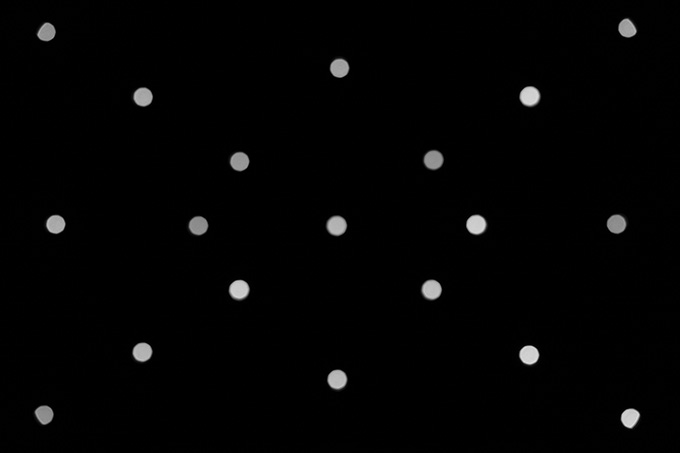
The general rendition of out-of-focus areas is silky smooth in the critical image background (shown to the left below). The foreground blur (to the right) is a tad more edgy but still very good.
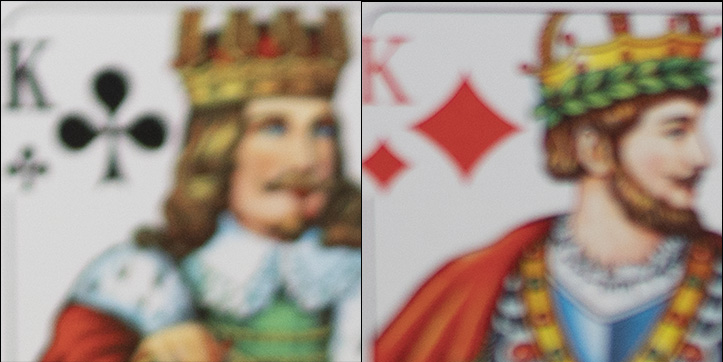
Bokeh Fringing (LoCA)
Bokeh fringing – also referred to as LoCAs – is a color fringing effect on the Z-axis. It shows up as purplish halos in front of the in-focus zone and greenish beyond. The effect is visible at f/1.4 and f/2 and starts fading at f/2.8 – this is a typical behavior for a non-APO lens.
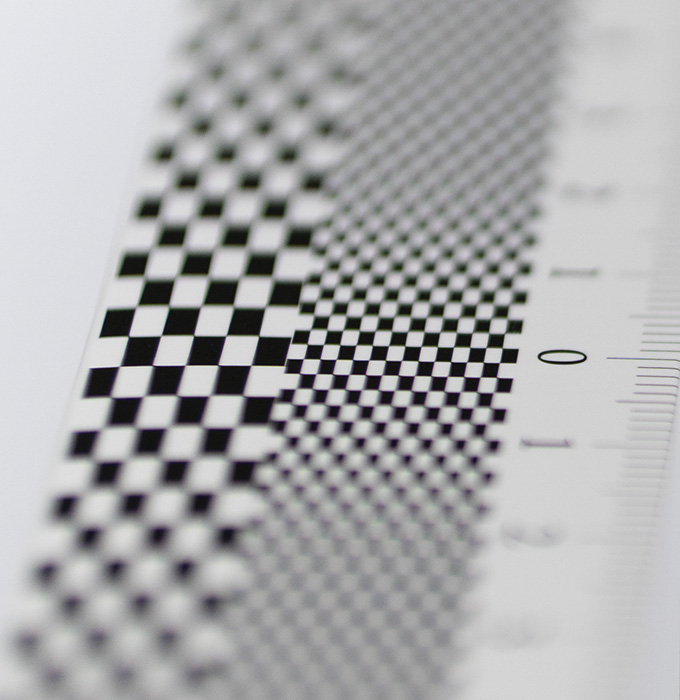
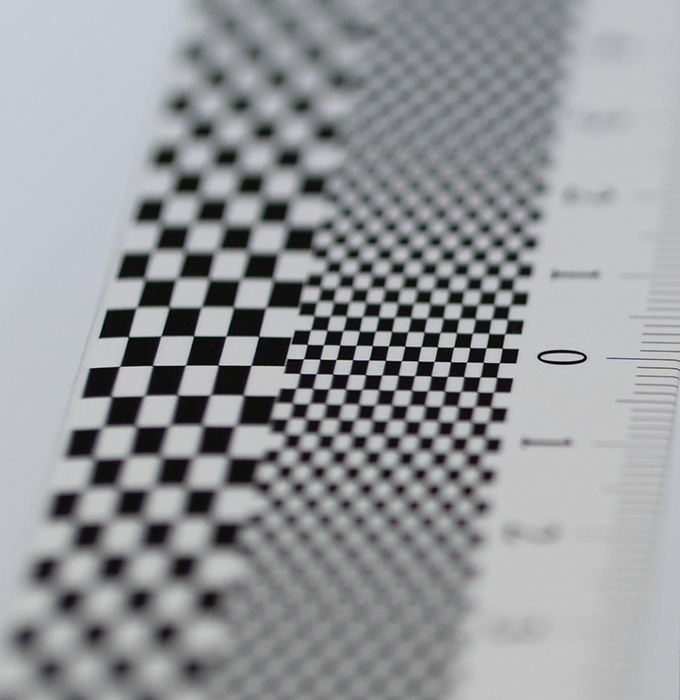

Sample Images
Competition
Numerous 50mm-ish lenses are competing with the Sigma 56mm f/1.4 DC DN (to the left below). Among the more obvious ones are the Zeiss Sonnar T* 55mm f/1.8 ZA (center) as the Samyang AF 50mm f/1.4 FE (to the right). Interestingly, the Sigma is a little sharper than the Zeiss lens (and probably also the Samyang). The more expensive Zeiss lens is comparable in size – because it has a smaller max aperture – whereas the Samyang lens is clearly bigger and as such less attractive for APS-C users. There are many more options including the Sony FE 50mm f/1.8, Samyang AF 45mm f/1.8, Sony E 50mm f/1.8, Zeiss T* 50mm f/1.4 ZA, Sigma 50mm f/1.4 DG DN ART … plus several manual focus lenses. So yes, this is a VERY crowded place indeed.

Visual comparison courtesy of camerasize.com.
Verdict
The Sigma 56mm f/1.4 DC DN Contemporary is an excellent example for how mirrorless lenses should be. It's small and well built with a focus on the optical characteristics where it counts the most while compromising on secondary aspects that can be corrected without too many headaches. Namely the sharpness is very good at f/1.4 and downright superb between f/2 and f/8. The laternal CAs are very low. This can't be said about the original distortion which is on the high side for a prime lens. Vignetting is also very pronounced at f/1.4. However, these two aspects are mostly corrected with image auto-correction either in-camera (with JPGs) or in RAW converters. A strength of the lens is the quality of the bokeh with nicely rendered out-of-focus highlights and a smooth blur in the focus transition zones. Bokeh fringing is present at large aperture but that's rather normal for such a lens.
The overall build quality is very good. The lens body is made of metal and the big, rubberized focus ring is both smooth as well as very grippy. It also has basic sealing of some kind. On the downside, manual focusing is way too coarse to be useful at shorter focus distances. The AF is about average for a modern mirrorless lens - thus it's quite fast, noiseless and accurate. You won't use it for action photography though.
The sum of its qualities combined with the very reasonable price tag make the Sigma 56mm f/1.4 DC DN Contemporary an obvious choice in its class. Therefore - highly recommended!
-
Optical Quality
-
Build Quality
-
Price / Performance


